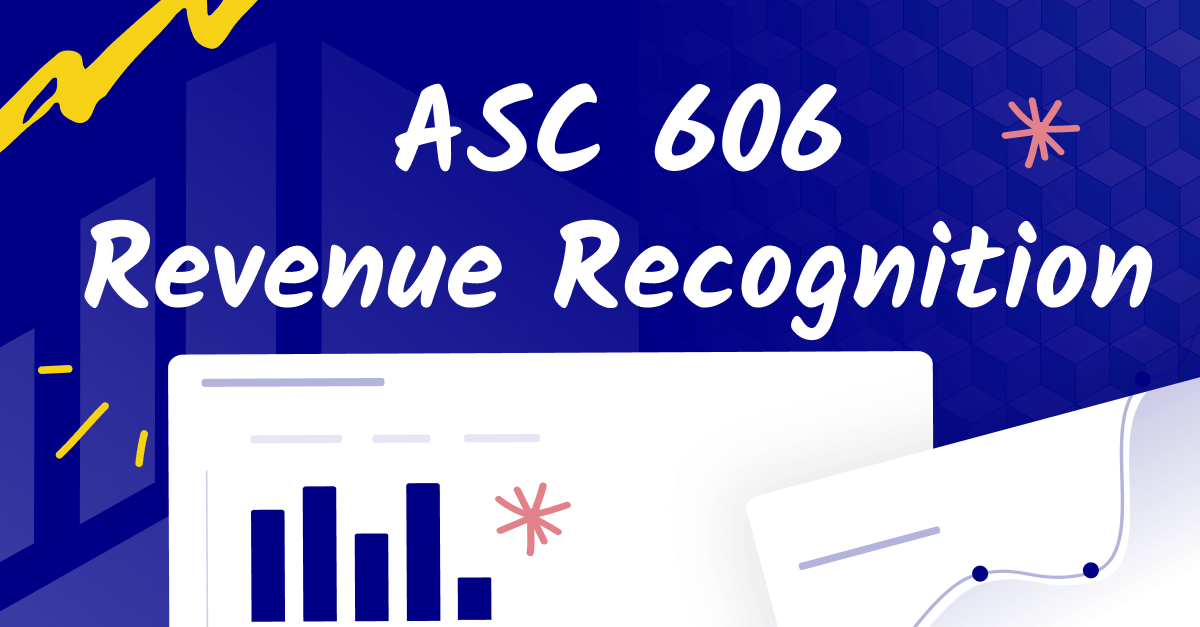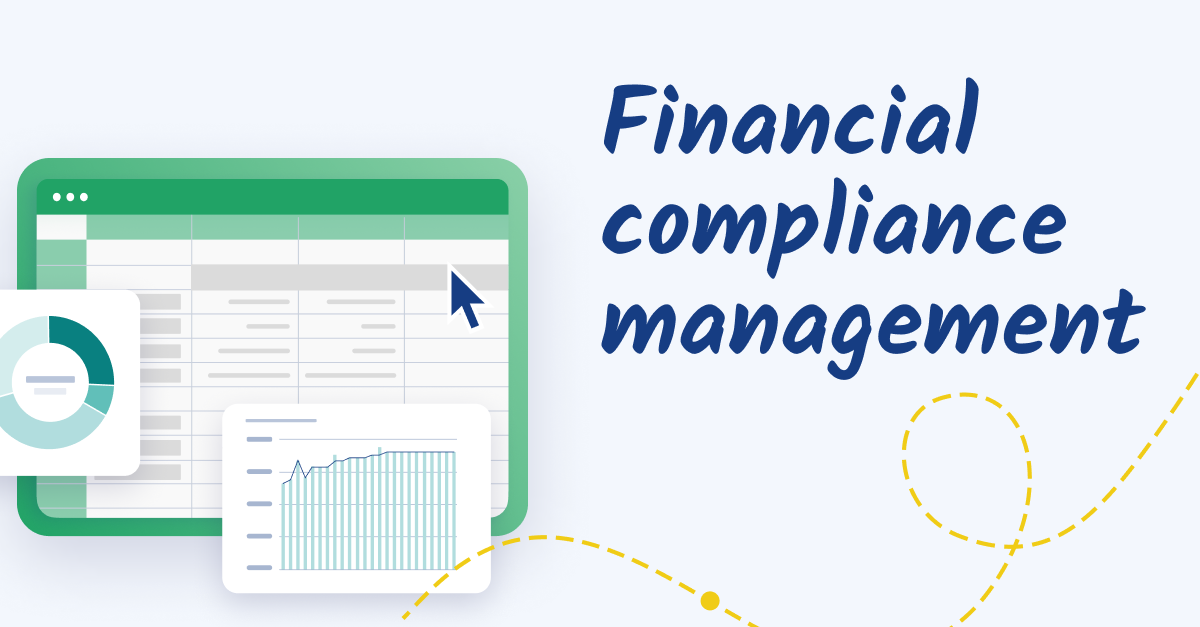What is ASC 606 revenue recognition?
Accounting Standards Codification Topic 606—or ASC 606—is a set of standardized accounting principles for revenue recognition.
It was established in 2017 by the Financial Accounting Standards Board (FASB) and the International Accounting Standards Board (IASB) to replace all prior transaction-and industry-specific guidelines. ASC 606 is now considered part of GAAP or the generally accepted accounting principles.
Basically, ASC 606 is to prevent companies from reporting and recognizing revenue to which they aren’t entitled.
The most significant change between ASC 606 and previous guidelines is that revenue can only be recognized when the contractual obligation with a customer is met—not when the payment is made.
Any costs incurred to obtain and fulfill contracts must be accrued over the estimated customer lifetime.
So why the change? The original purpose of ASC 606 was to:
- Create a new revenue recognition standard across entities, industries, jurisdictions, and markets, making it easier to compare financial statements and other forms of financial reporting
- Eliminate inconsistencies from previous guidelines
- Improve disclosure requirements so financial statements are clear
Compliance now depends on an exhaustive amount of data and judgment. In 2018, Deloitte noticed that revenue disclosures were up to 3X longer than the previous year.
Does ASC 606 apply to me?
At first, ASC 606 only applied to public companies. Still, in 2019, the standards were rolled out across all fiscal year-end organizations in the United States, including non-profits and private companies.
Any entity under contract to deliver goods or services to customers must comply.
However, there are a few exceptions. ASC 606 does not apply to:
- Contracts covered by other standards, like leases and insurance
- Financial instruments or guarantees (aside from product and service warranties)
- Non-monetary exchanges between entities in the same line of business to facilitate sales to prospects or customers
But generally, if you're an entity that reports year-end financial reports, you can assume that the revenue recognition principle applies to you.
How does ASC 606 work?
Revenue recognition under ASC 606 involves five steps:
1. Identify the contract
Any contract approved and committed to by all parties with clearly defined rights must comply with ASC 606 guidelines.
2. Identify performance obligations in the contract
Any promise to transfer goods or services to the customer qualifies as a performance obligation.
3. Determine the transaction price
The transaction price refers to the specific amount of cash or non-cash consideration an entity expects to receive from the customer, in exchange for the goods or services outlined in the previous step.
It can either be fixed or include variable considerations like volume discounts, rebates, constrained estimates, and non-cash options.
4. Allocate the transaction price
This step assigns a distinct transaction price to every performance obligation in the contract.
5. Recognize revenue
Revenue can be formally acknowledged as soon as the organization fulfills its performance obligations and transfers control of the product or service to the customer.
ASC 606 challenges for SaaS companies
Although ASC 606 was intended to align different industries with the same standards for revenue recognition, SaaS organizations still face some distinct challenges.
Revenue can only be recognized when an entity fulfills a performance obligation and the customer gains control of an asset.
The problem?
In SaaS, this process isn’t exactly straightforward. So a SaaS revenue recognition model is often complicated by several key factors.
1. Length
It’s not uncommon for SaaS contracts to last 3-5 years, which means revenue must be recognized over several accounting periods.
2. Nature of SaaS products and services
SaaS offerings are recurring, so continuous performance obligations exist.
3. Customization
Common variations include preset schedules, tiered or bundled pricing, usage or consumption-based fees, and add-ons like consulting, professional services, and maintenance fees.
Customers may negotiate non-standard terms, like agreeing to participate in a case study in exchange for a discounted rate.
Together, all of this makes it imperative for SaaS organizations to have effective revenue recognition methods.
Why revenue recognition is complex for modern finance teams
And here's the catch:
Many teams still rely on “tried and true” spreadsheets and old-school manual processes to get the job done...
...and while we're big fans of spreadsheets here at Cube (we built our product to help you stay in spreadsheets, after all)...
...we can't deny that, regarding revenue accounting and other revenue models, spreadsheets could use a little help.
This is why we say that modern finance teams are stuck between two bad choices.
Either you stay in the spreadsheets you know and love but contain the familiar headaches...
...or you rip and replace spreadsheets entirely and learn a complex new system.
We built Cube to provide a way out: it's the simplicity and familiarity of Excel and Google Sheets with the performance of enterprise-grade software.
And if you're an Excel or Google Sheets shop today and you'd like to stick with what you know works, request a demo and see how Cube can enhance your current processes.

Why traditional processes don’t work for ASC 606 revenue recognition
The issue with traditional spreadsheets is that they weren’t designed to handle the complexity of modern revenue recognition standards.
In fact, they haven’t changed much at all since their inception in the 1970s.
So modern finance teams that exclusively rely on spreadsheets have trouble when they want to recognize revenue efficiently.
That leaves finance teams continually grappling with:
1. Increased risk of errors
Spreadsheet wizardry has definitely become a bragging right. But just because you know how to do complex logic like no one’s business, doesn’t mean that’s always the best way to work—especially when the process is as complex as ASC 606 compliance.
For starters, standard Excel spreadsheets don’t have automated data integration—come ASC 606 season, you have to manually extract data from your CRM, accounting solution, or ERP—maybe even a custom solution.
And what about contracts potentially captured across multiple platforms? Without a streamlined and centralized source of truth, ensuring access to clean, accurate, timely data can feel like pushing a boulder up a hill.
It doesn’t matter how good you are with spreadsheets—sooner or later, an error will slip in. That's just human nature. Eyes get tired, fingers misclick, and suddenly there's an unrecognized mistake.
2. Limited functionality
We’ll be the first to admit that Excel spreadsheets are incredibly versatile, but they come at a price. They weren’t purpose-built for ASC 606 compliance.
When you have to engineer complex formulas to accurately describe a performance obligation or recognize revenue for a particular term, that’s a clear sign your software isn’t working for you—you’re working for your software.
3. Cumbersome manual tasks
Using manual processes and spreadsheets for ASC 606 compliance can leave you in a bind. On the one hand, errors are costly, so you must review every cell with a fine-toothed comb.
However, this takes an exorbitant amount of time—if you’re not careful, it can stall your entire Form 10-Q filing.
For public companies, that means landing on Nasdaq’s non-compliance list. It’s almost like walking a tightrope: you have to hit that right balance of taking enough time to adequately vet any errors, but not so long that you risk a delay.
Another major problem is that these manual processes absorb time you could otherwise spend on value-driven work—like the actual analysis.
Since ASC 606 compliance requires more judgment than previous guidelines, you can’t be cavalier about exerting brain power. (See: #1: increased risk of errors.)
4. Stalled scalability
Manual processes are inherently more vulnerable to individual circumstances. Suppose only one person knows how to wrangle a particular formula or work your wonky ERP.
In that case, your revenue recognition process can come to a screeching halt as soon as they change roles, move to another organization, or even take a sick day!
That's not a sustainable or future-proof solution, especially since contracts will only become more complex as your organization grows.
You can always outsource your headache to a third party but that comes at a massive cost. It also puts ASC 606 compliance in the hands of an external vendor who won’t suffer the same consequences as your organization, should any issues arise.
So what’s the solution? One word: automation.
How to automate your ASC 606 revenue recognition process
Automated processes are hugely beneficial for ASC 606 revenue recognition.
But what do they look like? There's no shortage of options available, from full-fledged financial automation software to spreadsheet-native solutions for teams looking to level up their spreadsheets without learning a whole new system.
The specifics will depend on your particular tech stack, but should ideally include some combination of the following:
Bi-directional data integration:
Automation is your best defense against disparate data, redundancies, poor data hygiene, and manual errors.
With bi-directional data integration, you can automatically push and pull data between spreadsheets and their sources like a CRM, ERP, and HRSIS.
This is invaluable for revenue recognition because it ensures you always work with accurate, relevant, and up-to-date information.
It also saves hours you can spend on analysis and judgment.
Calculations
Automated calculations are also crucial to protect your revenue recognition process from mistakes (and time sinks).
Some particularly helpful features include conditional calculations and recalculations from contract changes.
Audit trail
You have to keep tabs on contracts for a long time in SaaS, so being able to automatically track changes and approvals is invaluable.
It also helps eliminate redundancies and downstream overrides, since everyone is consistently working with the same information.
Repetitive tasks
Don’t underestimate the benefit of automating mundane or repetitive tasks. Single-click edits and bulk updates can save hours—especially when you have to update files with additional contract terms.
...Now, we know what you’re thinking.
"This sounds great, but evaluating, implementing, learning, and ramping up a new solution can take a year. What if I want to make improvements right away?"
The good news is that an automated revenue recognition process isn’t all or nothing.
It can be tempting to think in binary terms—your processes are either fully automated and future-proof or manual and old-fashioned. But this isn’t true.
You don’t need to overhaul your entire FP&A function to start leveraging automation for ASC 606 compliance.
Cube: a spreadsheet-native solution
With spreadsheet-native platforms, you can make significant improvements using tools you already know, like Excel and Google Sheets.
Cube CEO and founder Christina Ross decided to make this platform spreadsheet-native because she'd had bad experiences with rolling out new finance software when she was a CFO.
It’s also notably easier to get executive buy-in for broader automation when you focus on improving one particular function rather than remodeling your entire tech stack.
Since spreadsheet-native platforms have a significantly smaller learning curve, you can use ASC 606 compliance as a guinea pig to prove value, then gradually expand to a fully automated FP&A function.
Conclusion
Everyone in SaaS is obsessed with growth. But with a fully manual process for ASC 606 revenue recognition, organizations are punished for new contracts—with excessive and unnecessary manual work.
It’s time for more tech companies to apply the same agility and efficiency to revenue recognition as they do their products.
This will become even more imperative in 2024, when lean operations won’t just be beneficial, but crucial to survival.
Like it or not, automation is the only way to future-proof your organization—in finance and everything else.



.png)







![14+ of the best financial consolidation tools [2025]](https://www.cubesoftware.com/hubfs/Blog%20image%20%2891%29.png)
![14+ best financial close software tools [2025 review]](https://www.cubesoftware.com/hubfs/Financial-Close-Software%20%281%29.webp)
